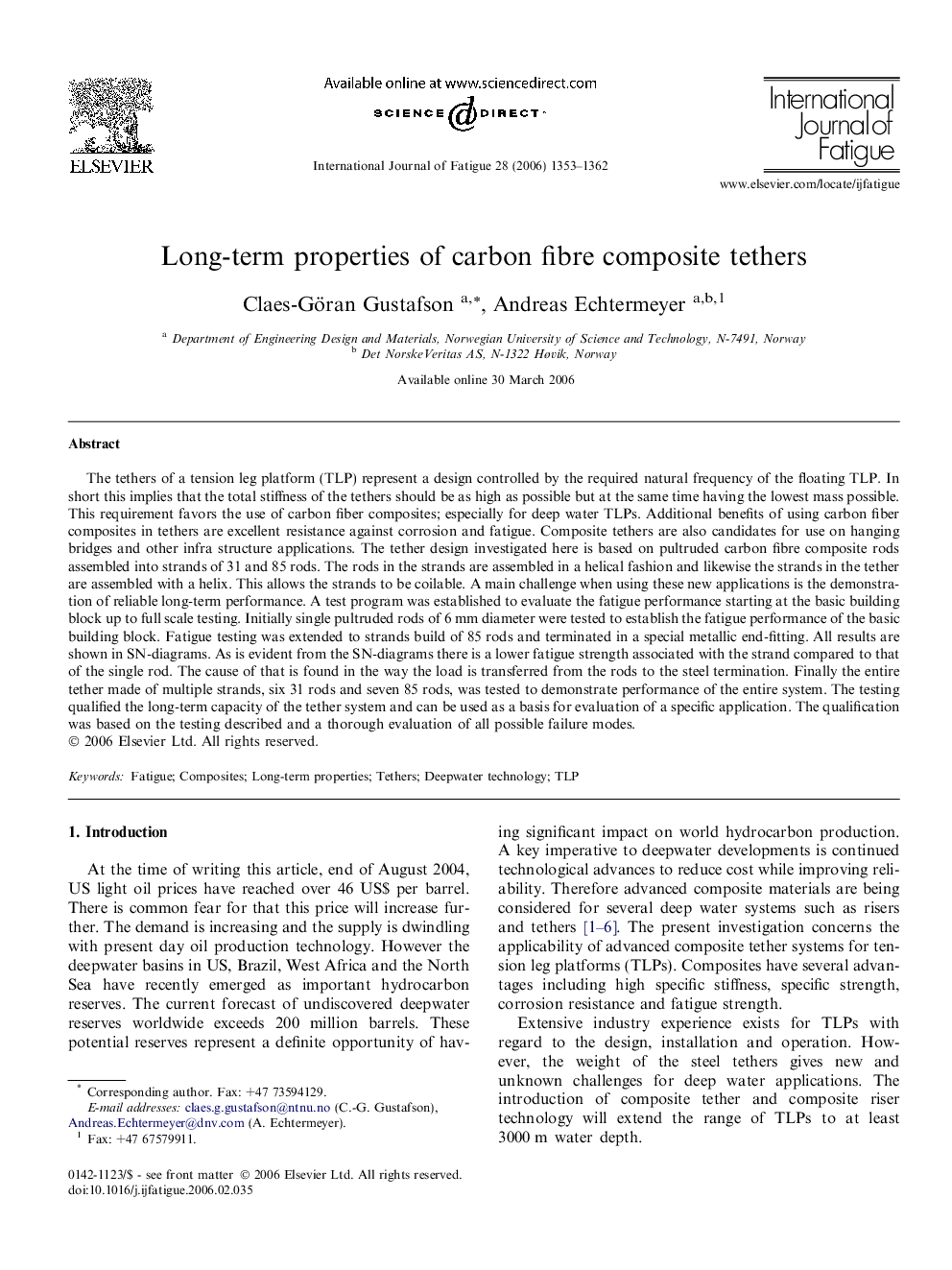| Article ID | Journal | Published Year | Pages | File Type |
|---|---|---|---|---|
| 781751 | International Journal of Fatigue | 2006 | 10 Pages |
The tethers of a tension leg platform (TLP) represent a design controlled by the required natural frequency of the floating TLP. In short this implies that the total stiffness of the tethers should be as high as possible but at the same time having the lowest mass possible. This requirement favors the use of carbon fiber composites; especially for deep water TLPs. Additional benefits of using carbon fiber composites in tethers are excellent resistance against corrosion and fatigue. Composite tethers are also candidates for use on hanging bridges and other infra structure applications. The tether design investigated here is based on pultruded carbon fibre composite rods assembled into strands of 31 and 85 rods. The rods in the strands are assembled in a helical fashion and likewise the strands in the tether are assembled with a helix. This allows the strands to be coilable. A main challenge when using these new applications is the demonstration of reliable long-term performance. A test program was established to evaluate the fatigue performance starting at the basic building block up to full scale testing. Initially single pultruded rods of 6 mm diameter were tested to establish the fatigue performance of the basic building block. Fatigue testing was extended to strands build of 85 rods and terminated in a special metallic end-fitting. All results are shown in SN-diagrams. As is evident from the SN-diagrams there is a lower fatigue strength associated with the strand compared to that of the single rod. The cause of that is found in the way the load is transferred from the rods to the steel termination. Finally the entire tether made of multiple strands, six 31 rods and seven 85 rods, was tested to demonstrate performance of the entire system. The testing qualified the long-term capacity of the tether system and can be used as a basis for evaluation of a specific application. The qualification was based on the testing described and a thorough evaluation of all possible failure modes.
